Shine Bright, Ride Safe: Empowering Motorcyclists with Effective Safety Light Solutions

Motorcycle safety is a critical issue that demands attention. With their open design and limited protection, motorcycles pose a higher risk to riders compared to other vehicles. The vulnerability of motorcyclists on the road is amplified by factors such as reduced visibility and the potential for accidents caused by the negligence of other drivers. Motorcycle safety lights not only enhance the rider’s presence but also serve as crucial communication tools to indicate their intentions to other drivers/riders. By incorporating advanced lighting technology, motorcyclists can greatly reduce the likelihood of accidents and increase their overall safety on the road.
Understanding Motorcycle Safety Lights
Motorcycle safety lights play a vital role in ensuring riders’ visibility and safety on the road. These lighting systems are specifically designed to enhance the motorcycle’s visibility to other motorists, especially in low-light conditions or adverse weather. By effectively communicating the rider’s presence and intentions, safety lights significantly reduce the risk of accidents. The primary components of motorcycle safety lights include headlights, taillights, brake lights, turn signals, and additional safety lights.
Listed below is a chart showing the locations and functions of these lights.. Please note that the “Location” column for auxiliary lights, running lights, and hazard lights is listed as “Various” because these lights can be mounted in different positions on the motorcycle, depending on the specific model and customization.
| Safety Light | Location | Function |
|---|---|---|
| Headlights | Front | Provide illumination for the rider to navigate in dark environments and improve their visibility to oncoming traffic. |
| Taillights | Rear | Serve as a crucial indicator for other motorists. Illuminate when the motorcycle is in motion, indicating its presence. Function as brake lights when the rider applies the brakes. |
| Turn signals | Front & Rear | Allow riders to communicate their intention to change direction. Blink in the desired direction to inform other road users of an upcoming turn or lane change. |
| Auxiliary lights | Various | Additional lights mounted on various parts of the motorcycle to improve visibility in specific conditions (e.g., fog, off-road riding). |
| Running lights | Various | Constantly illuminated lights to increase the motorcycle’s overall visibility. |
| Hazard lights | Various | Activated in emergency situations, alerting nearby motorists to potential dangers or obstacles ahead. |
Benefits of Motorcycle Safety Lights and Legal Requirements

The use of motorcycle safety lights offers numerous benefits for riders. Firstly, they significantly increase the visibility of motorcycles, making them more noticeable to other drivers, especially in low-light conditions or during inclement weather conditions. Improved visibility reduces the chances of accidents caused by other motorists failing to see motorcycles on the road. Secondly, safety lights enhance the rider’s ability to communicate intentions effectively, such as changing lanes or making turns, thereby reducing confusion and improving overall traffic flow. Lastly, the presence of safety lights can instill a sense of confidence and reassurance in riders, knowing that they are taking proactive measures to enhance their safety.
It is essential for motorcyclists to familiarize themselves with the legal requirements and regulations pertaining to safety lights. These requirements can vary depending on the jurisdiction, but they generally include specifications on the type, placement, and functionality of safety lights. Compliance with these regulations not only ensures the rider’s safety but also helps avoid potential legal issues. Riders should consult their local traffic laws or transportation authorities to understand the specific requirements and guidelines relevant to their region. For California legal requirements check out Motorcycle Equipment Requirements by California Highway Patrol. I also found this article called Motorcycle LED Laws in the US by Trevor Remy where he goes into rules and regulations in specific states in USA.
How Safety Lights Enhance Visibility

Motorcycle safety lights are designed to significantly enhance visibility, making riders more conspicuous to other road users. Headlights, for example, provide forward illumination and allow motorcyclists to see and be seen by oncoming traffic. Bright and properly aligned headlights not only illuminate the road ahead but also grab the attention of other motorists, reducing the risk of collisions.
Taillights and brake lights serve as essential safety features, indicating the presence and actions of motorcycles to following vehicles. These lights illuminate when the brakes are applied, signaling drivers behind to reduce speed and maintain a safe distance.
Turn signals and indicators enable motorcyclists to communicate their intentions, such as changing lanes or making turns. These lights alert other motorists, allowing them to anticipate the rider’s movements and act accordingly.
Additional safety lights, such as auxiliary lights or LED accent lights, can further enhance visibility by providing additional illumination from different angles. These lights increase the overall presence of motorcycles on the road, making them more conspicuous and reducing the likelihood of accidents caused by inadequate visibility.
Case Studies and Statistics

Numerous case studies and statistics highlight the significant impact of motorcycle safety lights on accident prevention. Research has shown that motorcycles equipped with proper lighting systems are involved in fewer accidents compared to those without adequate safety lights. Studies indicate that the use of headlights during the day can reduce the risk of collisions with other vehicles by increasing the visibility of motorcycles.
Furthermore, data reveals that the inclusion of effective brake lights and turn signals significantly reduces the incidence of rear-end collisions and improves overall rider safety. These findings underscore the importance of safety lights as a proactive measure to prevent accidents and protect motorcycle riders on the road. By enhancing visibility through the use of safety lights, motorcyclists can greatly reduce the chances of being overlooked or involved in accidents caused by visibility-related issues.
Types of Motorcycle Safety Lights
Headlights
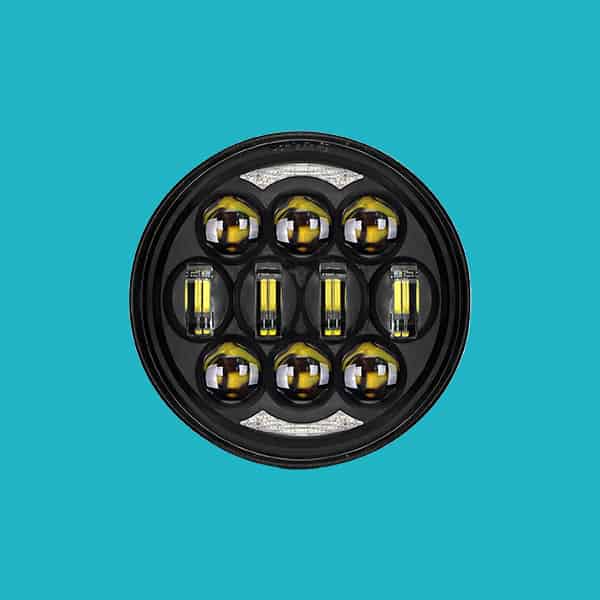
Headlights are among the most crucial safety lights on a motorcycle. They provide illumination for the rider to see the road ahead and also increase the visibility of the motorcycle to other motorists. High beam headlights are designed to emit a brighter and more focused light, ideal for dark or poorly lit environments. They help illuminate the rider’s path and make the motorcycle more conspicuous to oncoming traffic.
You can check out the Prices here.
Auxiliary Lights
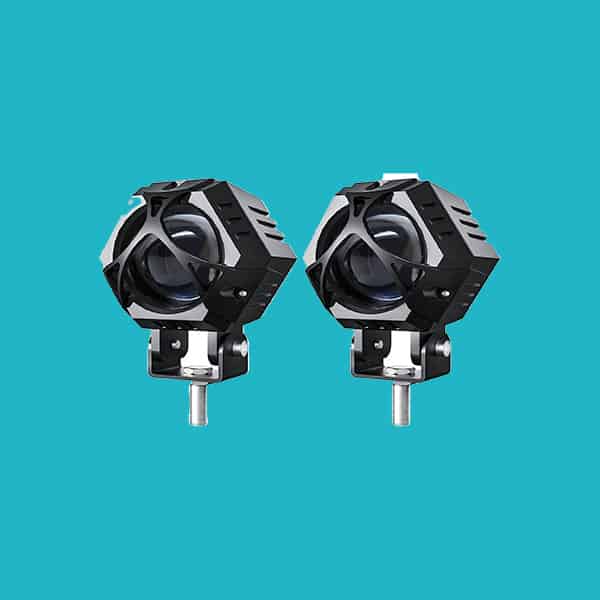
Auxiliary lights, also known as driving lights or spotlights, are additional lighting fixtures that can be mounted on motorcycles. They offer supplementary illumination, enhancing visibility in specific areas, such as the sides of the road or during cornering. Auxiliary lights can significantly improve safety, especially in low-light conditions or adverse weather.
You can check out the Prices here.
Tail Lights and Brake Lights
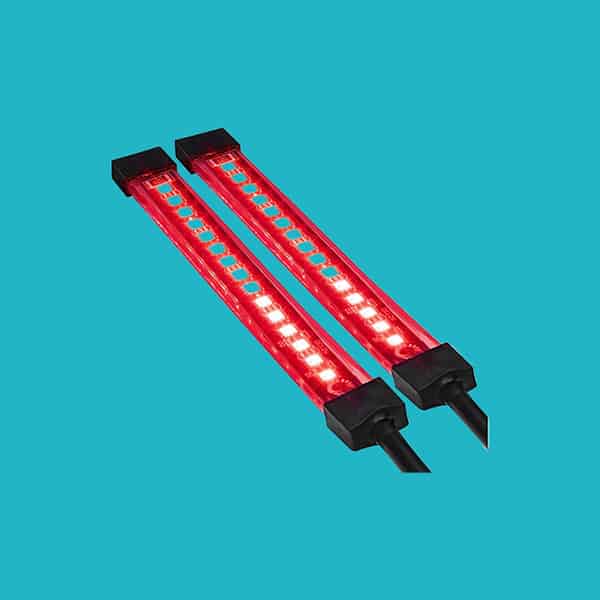
Taillights and brake lights are essential safety lights located at the rear of the motorcycle. Taillights remain illuminated at all times, making the motorcycle more visible to following vehicles. They act as a constant indicator of the motorcycle’s presence on the road. Brake lights are activated when the rider applies the brakes, providing a clear signal to drivers behind to reduce speed and maintain a safe following distance. The increased visibility of brake lights helps prevent rear-end collisions, as other motorists can anticipate the motorcycle’s deceleration.
You can check out the Prices here.
Turn Signals and Indicators
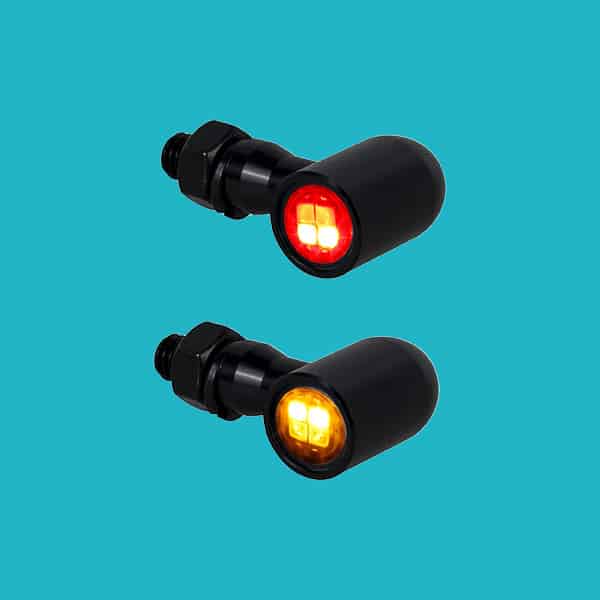
Turn signals, also known as indicators, are safety lights that allow motorcyclists to communicate their intentions to other drivers. They are crucial for indicating lane changes, turning, or merging into traffic. Typically located at the front and rear of the motorcycle, turn signals emit a flashing light to alert other motorists of the rider’s intended maneuver.
You can check out the Prices here.
Additional Safety Lights
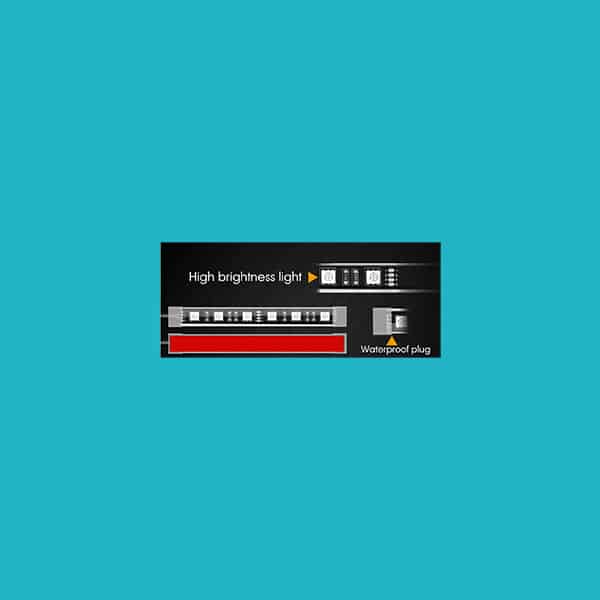
Apart from the main safety lights mentioned above, there are additional lighting options available to enhance visibility and safety. These include LED accent lights, which can be mounted on various parts of the motorcycle to provide additional illumination and increase the overall visibility of the bike. Other options include reflective tape or decals, which reflect light and improve the motorcycle’s visibility from different angles.
You can check out the Prices here.
In conclusion motorcycle safety lights play a pivotal role in enhancing rider visibility and promoting overall safety on the road. By understanding the crucial role safety lights play in mitigating risks, riders can make informed decisions and equip their motorcycles with the appropriate lighting systems. Whether it’s headlights, taillights, brake lights, turn signals, or additional safety lights, each component contributes to increased visibility and communication with other motorists. It is our collective responsibility to prioritize motorcycle safety and advocate for awareness and respect on the road. By promoting motorcycle safety awareness through community initiatives and leveraging digital platforms, we can make a positive impact on road safety for motorcyclists.
FAQs
Do motorcycles have hazard lights?
Yes, motorcycles can have hazard lights, which are used to indicate potential danger or emergency situations.
What color light is best for a motorcycle?
The best color light for a motorcycle is generally white or amber. White lights are commonly used for headlights, while amber lights are often used for turn signals and hazard lights.
Can you have LED lights on your motorcycle?
Yes, you can have LED lights on your motorcycle. LED lights are commonly used in motorcycles due to their energy efficiency, durability, and brighter illumination.
Should motorcycle lights always be on?
It is recommended to have the motorcycle lights on at all times, especially the headlights, for increased visibility and safety.
Why do motorcycles have one light on?
Motorcycles typically have one light on, known as the headlight, to provide illumination and improve visibility for both the rider and other road users.
Why are new bike lights always on?
New bike lights are often designed to be always on as a safety measure. This continuous illumination helps improve visibility, especially during low-light conditions.
Should bike lights be flashing or constant?
Bike lights can be either flashing or constant, depending on the local regulations and personal preference. However, a steady or constant light is generally recommended for maximum visibility.
Why do motorcycles have hazard lights?
Motorcycles have hazard lights to alert other road users of potential danger or emergency situations, such as a breakdown, accident, or when the motorcycle is stationary in a hazardous location.
What lights should you have on a bike?
On a bike, you should have at least a white front light and a red rear light. Additionally, it is recommended to have reflectors on the pedals and wheels for enhanced visibility.
- Tackling the Fear of Motorcycles: A Must-Read for Every Rider - April 25, 2024
- Motorcycle Lost All Electrical Power While Riding - December 10, 2023
- Motorcycle Safety Tips for New Riders - November 23, 2023




